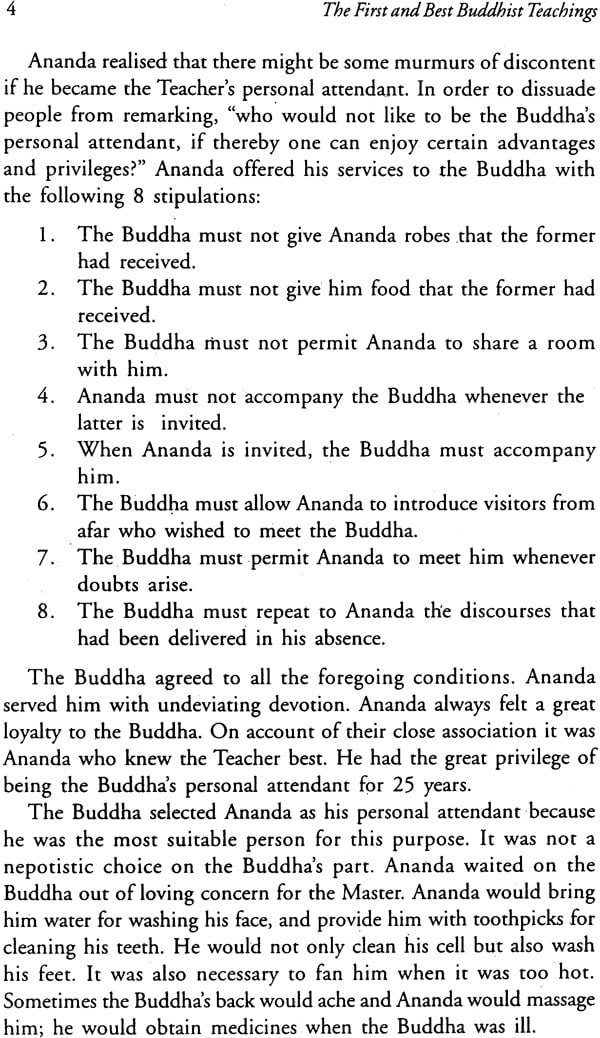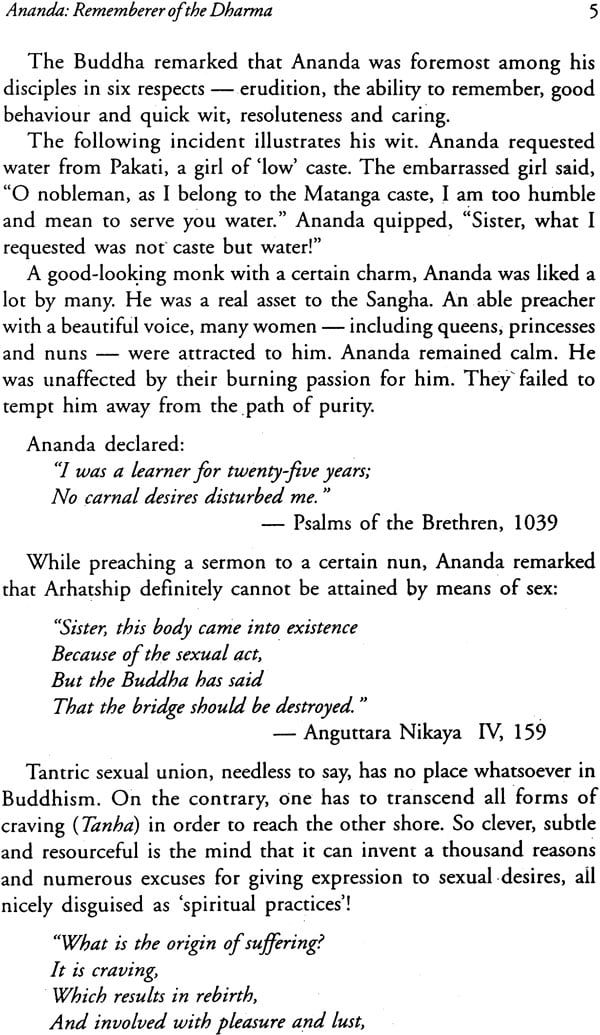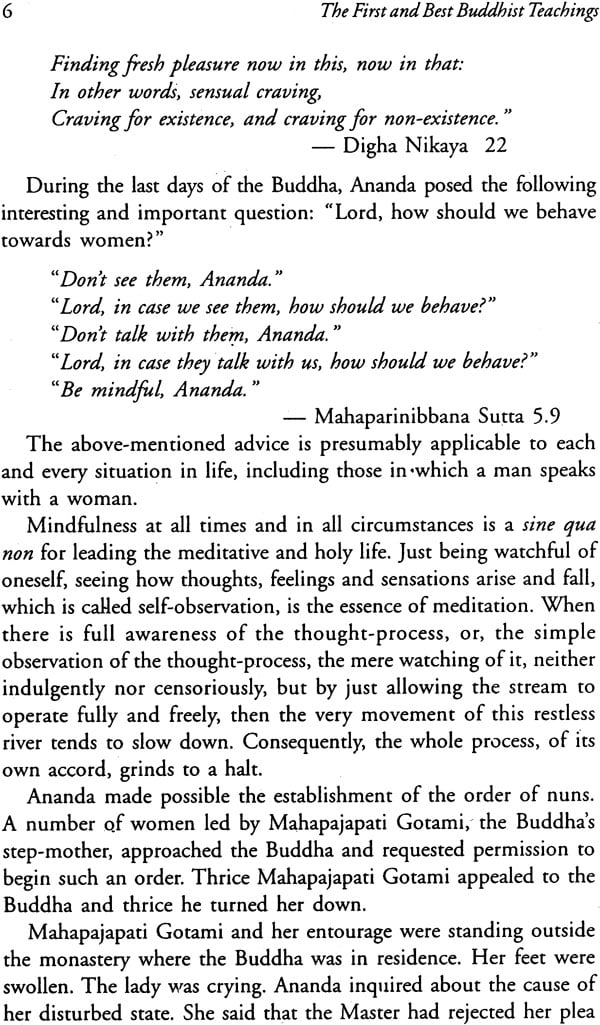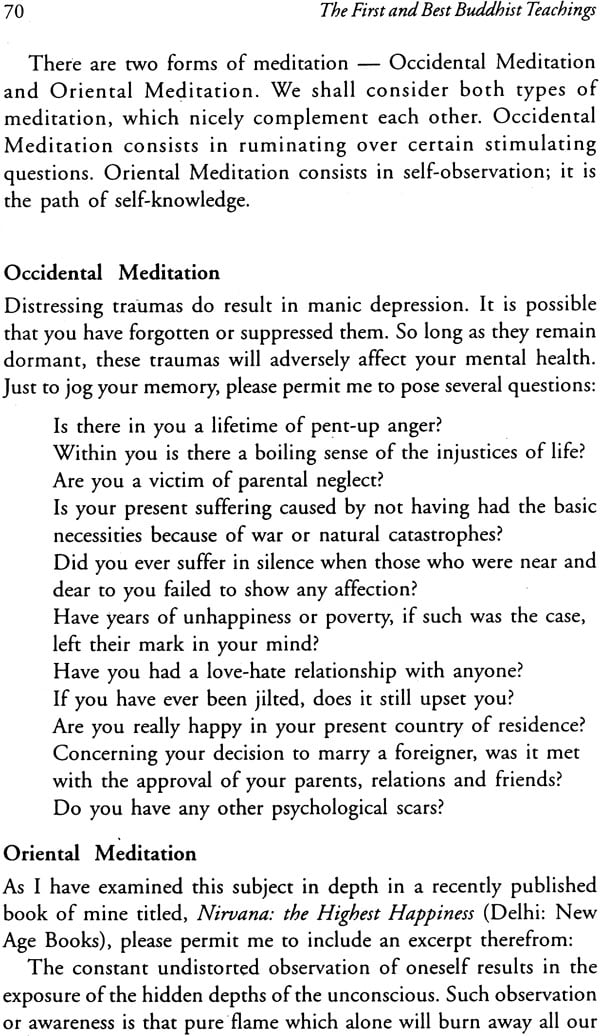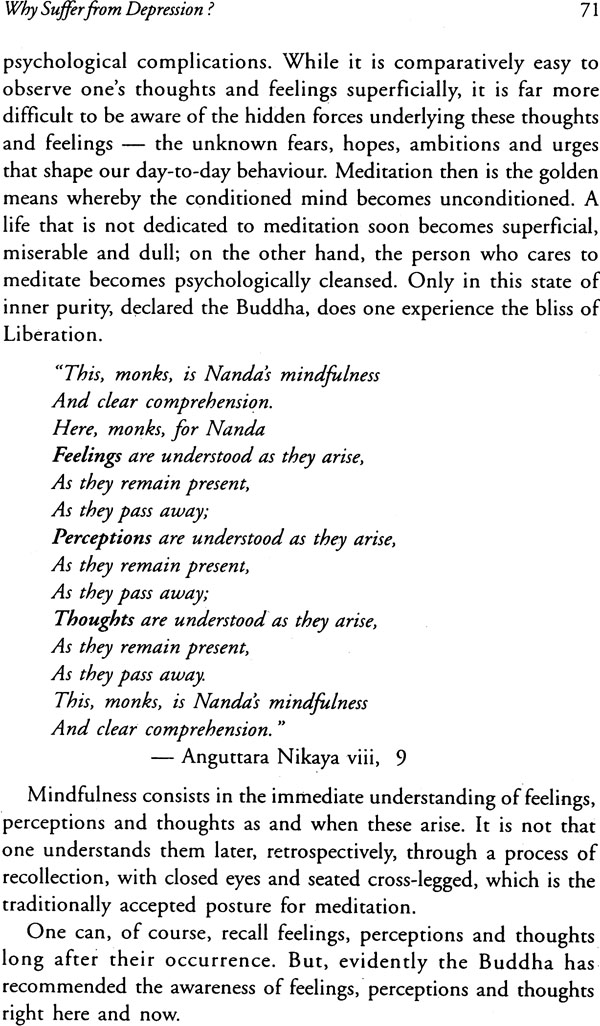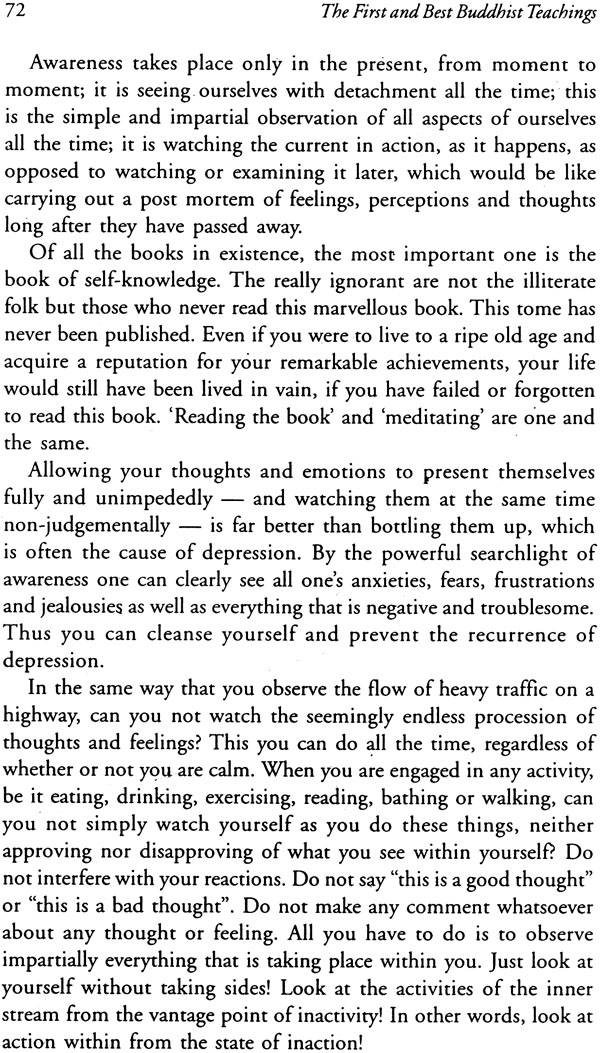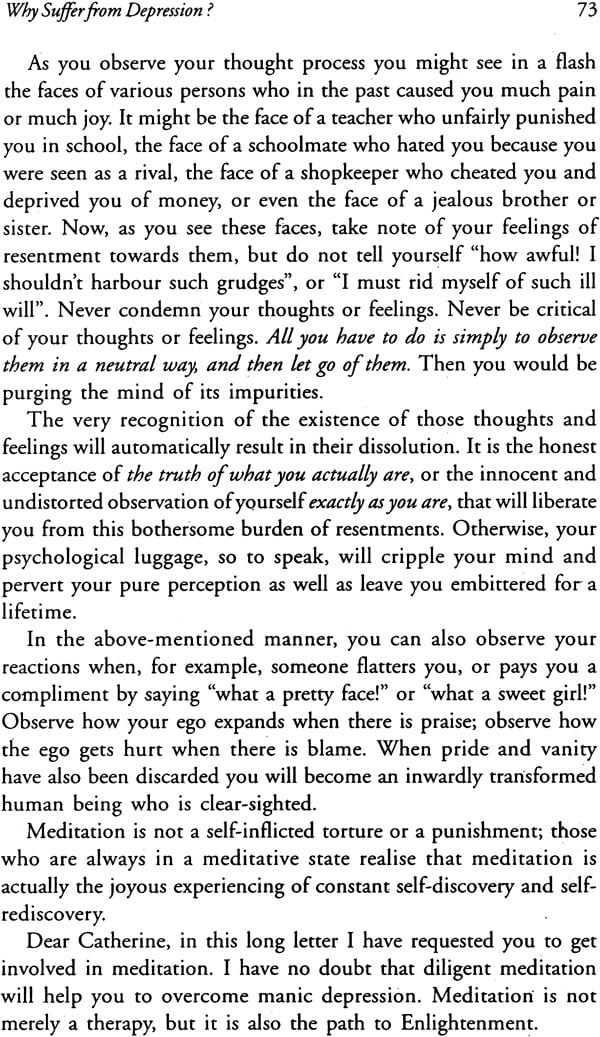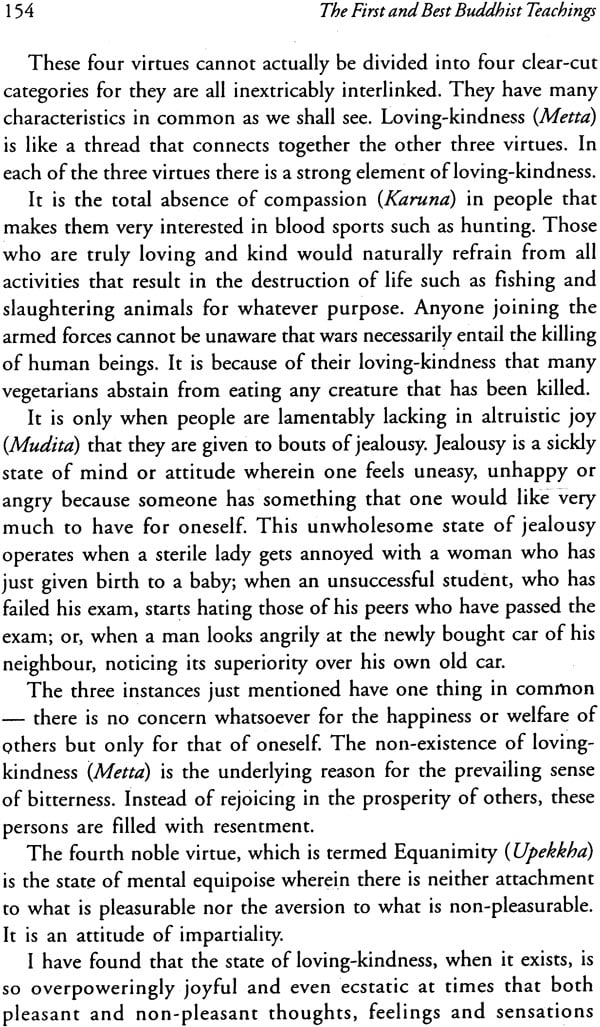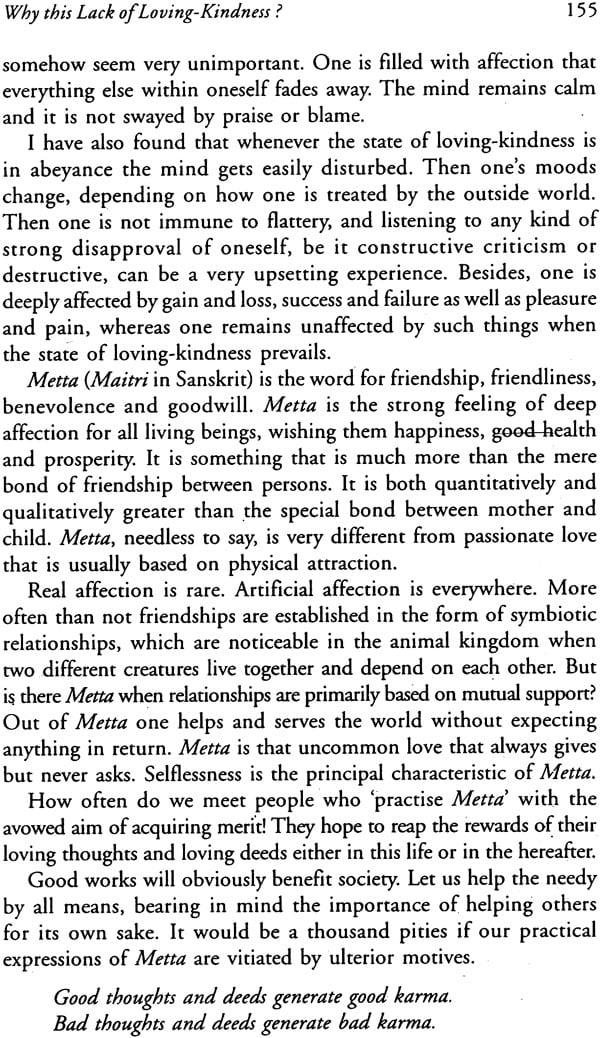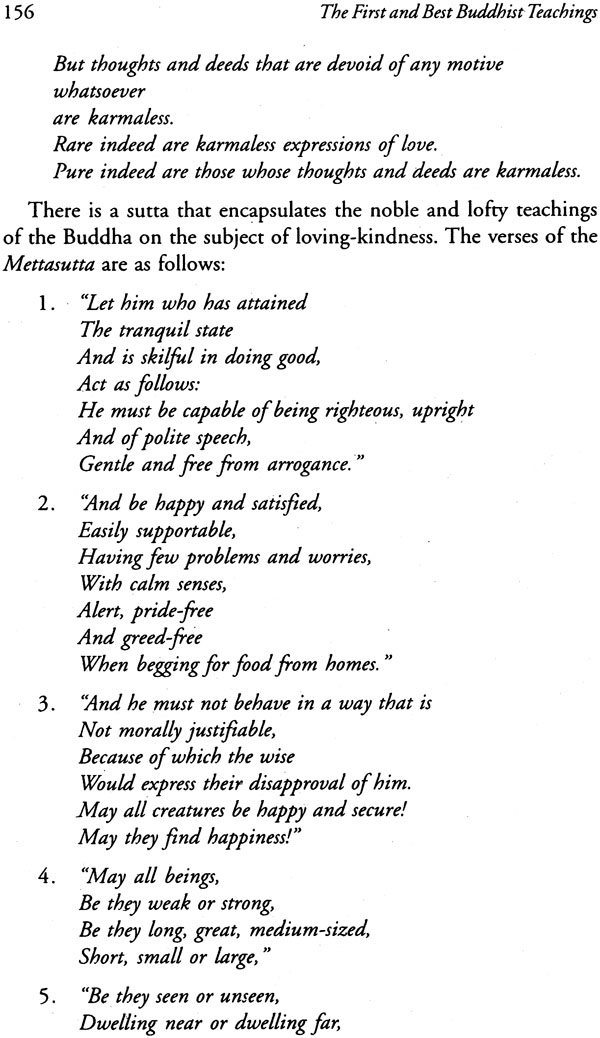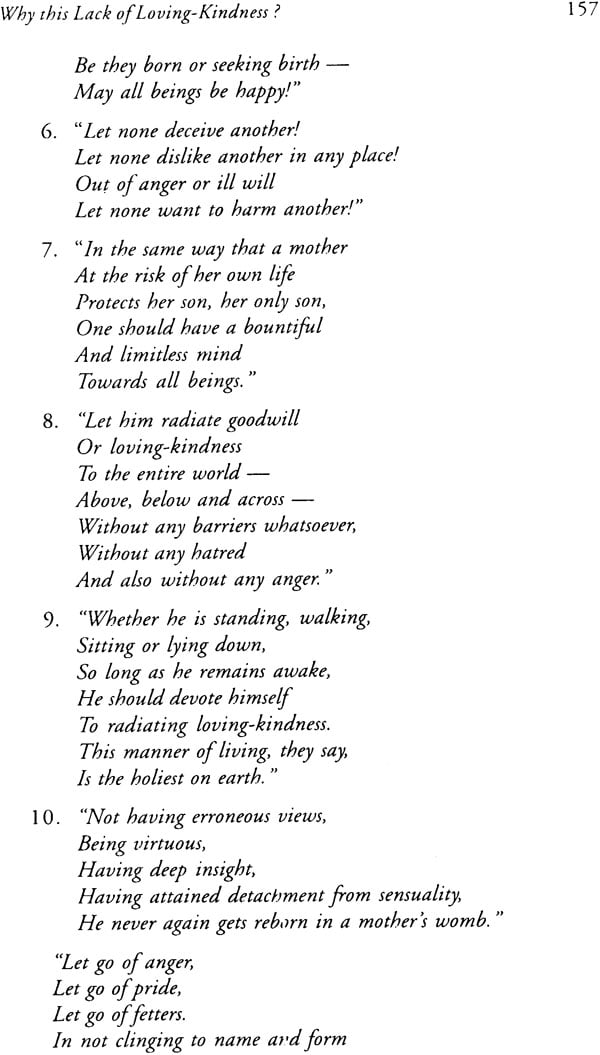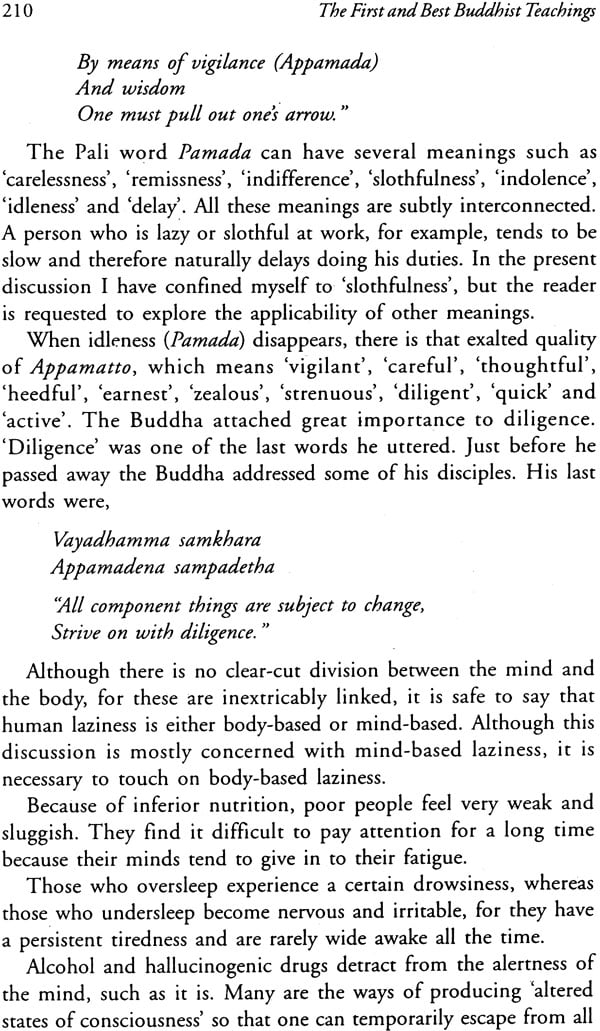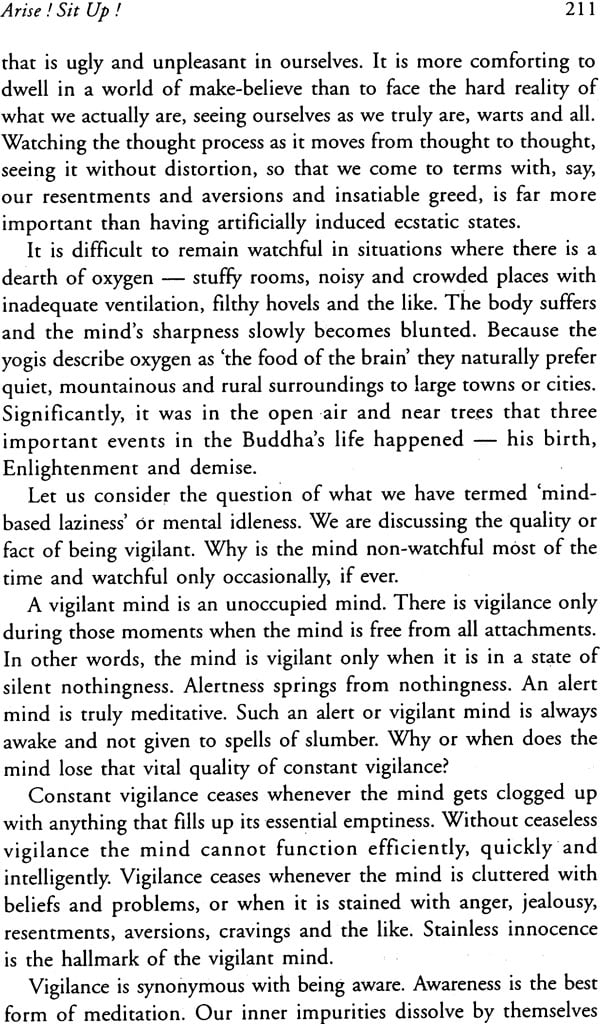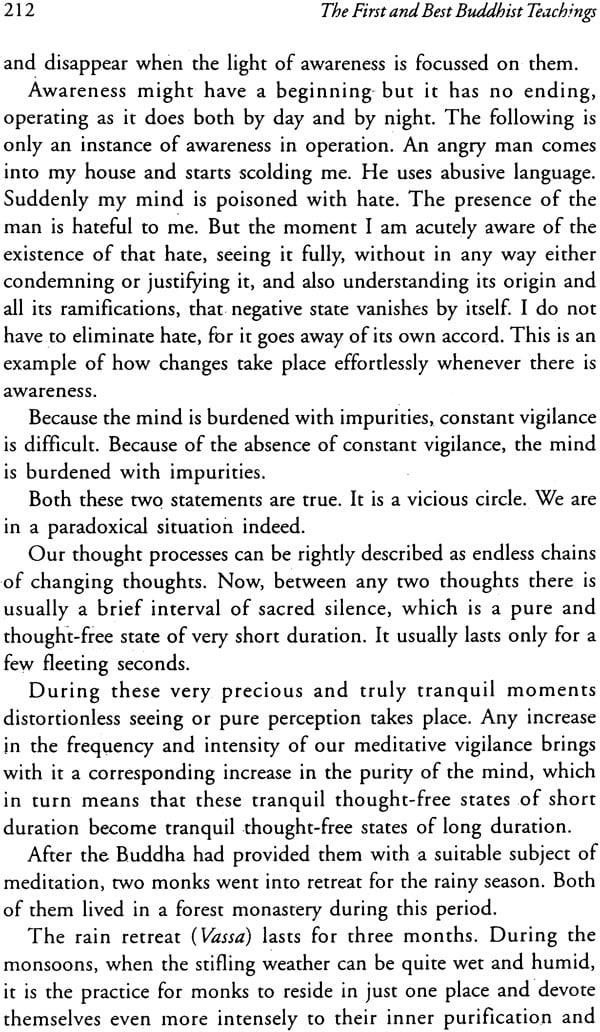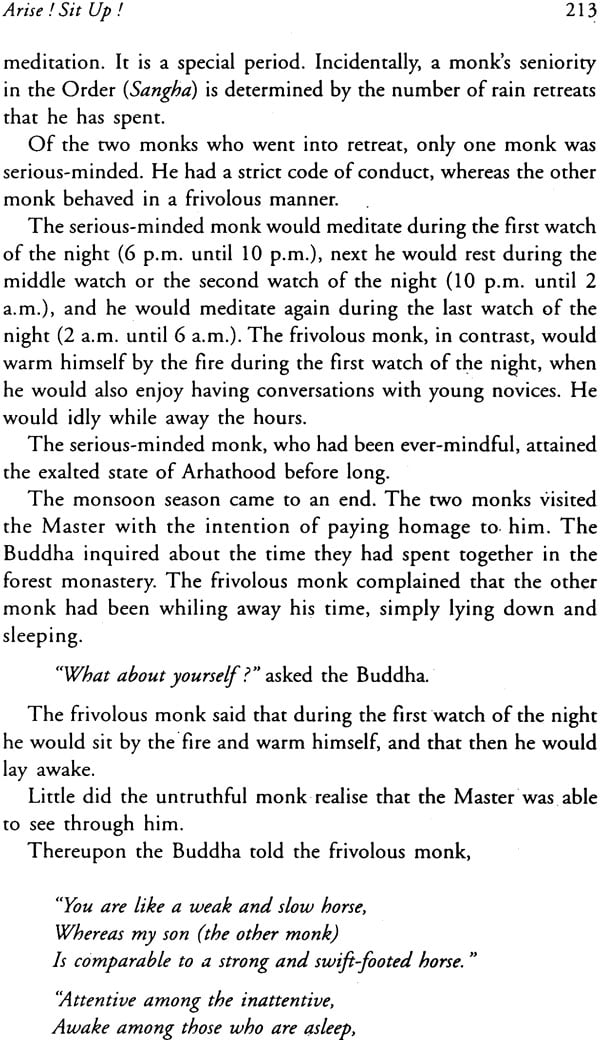
The First and Best Buddhist Teachings: Sutta Nipata Selections and Inspired Essays
Book Specification
| Item Code: | IDI134 |
| Author: | Dr. Susunaga Weeraperuma |
| Publisher: | New Age, New Delhi |
| Language: | English |
| Edition: | 2006 |
| ISBN: | 9788178222578 |
| Pages: | 245 |
| Cover: | Paperback |
| Other Details | 5.4"X 8.3" |
| Weight | 210 gm |
Book Description
More than half of this book consists of selections from the Sutta Nipata and my commentaries thereon. Extraordinarily profound is the Sutta Nipata, which is the oldest sacred tome in Buddhist literature. It is a particularly authentic version of the Buddha's discourses, because of its antiquity, language, style and contents. In my commentaries I have tried to go beyond the words of these very powerful verses and understand their hidden meanings intuitively.
There is a popular misconception that Buddhism is a rather airy-fairy intellectual system that is out of touch with the harsh realities of life. This impression is out totally untrue. I have tried to demonstrate that the Buddha was a very practical person in the chapter Facing Death: Kisagotami's Problem. He handled her psychological crisis by asking her to do something. She had to carry out a task. Kisagotami had been inconsolable when her beloved son died. Refusing to accept the inevitability of death, she had the fanciful notion that the boy was only ill and would soon return to normalcy. Carrying the corpse in her arms, she had approached the Buddha, who had realised that the poor woman was still too distraught to think clearly about her dear son's demise. The Buddha did not preach her a sermon, as would have been his usual practice, but instructed her to get some mustard seeds from a house wherein none had ever died. She went in search of such a house but without success. Realising the sheer impossibility of finding a household that had never been touched by death, Kisagotami eventually understood the fact of impermanence- the great truth of Anicca concerning the rising, changing and passing of things. Existences is never permanent. All existence is impermanent. All formations are transitory. As Nirvana is neither a formation nor a conditioned state, Nirvana alone is existence, my favourite definition is quite a simple one. Real religion is nothing but how you conduct yourself in everyday life. A truly religious person, in other words, leads a life that is infused with a moral sense. What matters is not the belief in this, that and the other, but whether or not we are really righteous and feel compassion for all living beings. This profound truth was well expressed by the Master:
Better than leading an immoral life lasting for one hundred years, is one single day devoted to virtue and meditation.- Dhammapada, 110.
Purity in thought, word and deed is one of the central themes in the Sutta Nipata. Morality or virtue is a sine qua non of Nirvana. Purity is not the outcome of the brutal repression of all that is negative or unwholesome in the psyche, but the intelligent and insightful recognition of their existence, or the awareness of one's negative trails fully, and the consequent elimination of them. The perfume of purity is born of understanding.
Watchful intelligence is meditation. Are we always watchful and alert? Are we always awake? By being alert and by spotting what is bad within us, the mind automatically gets cleansed of its troublesome traits.
Such is the degeneracy of our times that the vast majority in both the East and the West are obsessed with money-making. The modern ethic, alas, seems to be to amass wealth as hurriedly as possible by hook or by crook. Our relentless pursuit of power, position, profit and pleasure verges on the neurotic. Gone are the Times when what we valued most in life was the true, the good and the beautiful. In the Sigalovada Sutta, which has been the inspiration for the chapter Recipe for a Happy Society, the Buddha examined social interactions from a highly ethical standpoint.
Back of the Book
Extraordinarily profound is the Sutta Nipata, which is the oldest sacred book in Buddhist literature. It is a particularly authentic version of the Buddha's discourses because of its antiquity, language and contents.
Susunaga Weeraperuma's faithful and masterly rendering of the Sutta Nipata deepens our understanding of the teachings. An eminent writer in the field of Buddhism, he has lucidly expressed the ancient wisdom in the idiom of our time, Great philosophical insights abound in this collection of essays. The commentaries therein are refreshingly original.
Additional essays address various issues of deep concern and offer practical solutions- where on depression, facing death, growing old, finding happiness or world peace.
Dr. Susunaga Weeraperuma is a prolific author whose writings testify to his profound understanding of Indian Philosophy, Vedanta and Buddhism. Author of New Insights into Buddhism, Nirvana: the Highest Happiness, A Bibliography of the Life and Teachings of Jiddu Krishnamurti among others, his celebrated book of reminiscences entitled J. Krishnamurti as I Knew Him, has been translated into several languages.
Weeraperuma lives in the quietness of the medieval French village called Les Arcs-sur-Argens and devotes his time to Hatha Yoga, contemplation, writing and organic gardening.
| Preface | vii | |
| Acknowledgements | xi | |
| | ||
| | ||
| Chapters | ||
| 1 | Ananda: Rememberer of the Dharma | 3 |
| 2 | Facing Death: Kisagotami's Problem | 15 |
| 3 | Recipe for a Happy Society | 25 |
| 4 | The Joy of Solitude | 33 |
| 5 | Glimpses of Nothingness | 39 |
| 6 | Why Worry about Growing Old? | 45 |
| 7 | Why Suffer from Depression? | 59 |
| 8 | Crossing the Stream of Thought | 75 |
| 9 | The Cycle of Births and Deaths | 81 |
| 10 | In Praise of Pacifism | 87 |
| 11 | Buddhist Blueprint for Word Peace | 93 |
| 12 | The Buddha Denounced the Destruction of Life | 97 |
| 13 | Advice on Awareness for Meghiya | 101 |
| References | 106 | |
| | ||
| | ||
| Introduction | 110 | |
| 14 | The Importance of Virtue | 111 |
| 15 | What is Conductive to Happiness? | 119 |
| 16 | Causes of our Decline and Fall | 123 |
| 17 | Demons Discuss the Buddha's Great Qualities | 129 |
| 18 | The Demon Alavaka Challenges the Buddha | 135 |
| 19 | Dropping the Inner Obstacles | 141 |
| 20 | Rich Dhaniya Talks to the Buddha | 145 |
| 21 | Four Kinds of Recluses | 149 |
| 22 | Why this Lack of Loving- Kindness? | 153 |
| 23 | Modus Operandi of Meditation | 159 |
| 24 | Our Enslavement to the Body | 163 |
| 25 | The Special Qualities of a Sage (Muni) | 167 |
| 26 | Short Sutta on Sincere Friendship | 173 |
| 27 | The Shore Beyond Samsara | 177 |
| 28 | Monks Must Lead Pure Lives | 183 |
| 29 | Why this Senseless Sacrificial Slaughter of Cows? | 191 |
| 30 | Use a strong Boat for Sailing Through | 199 |
| 31 | Moral Conduct and the Greatest Goal | 205 |
| 32 | Arise! Sit up! | 209 |
| 33 | Some Basic Instructions that Rahula Received | 215 |
| 34 | Did Nigrodhakappa Attain Nirvana? | 219 |
| 35 | What is the Right Road for a Recluse? | 225 |
| References | 231 |

